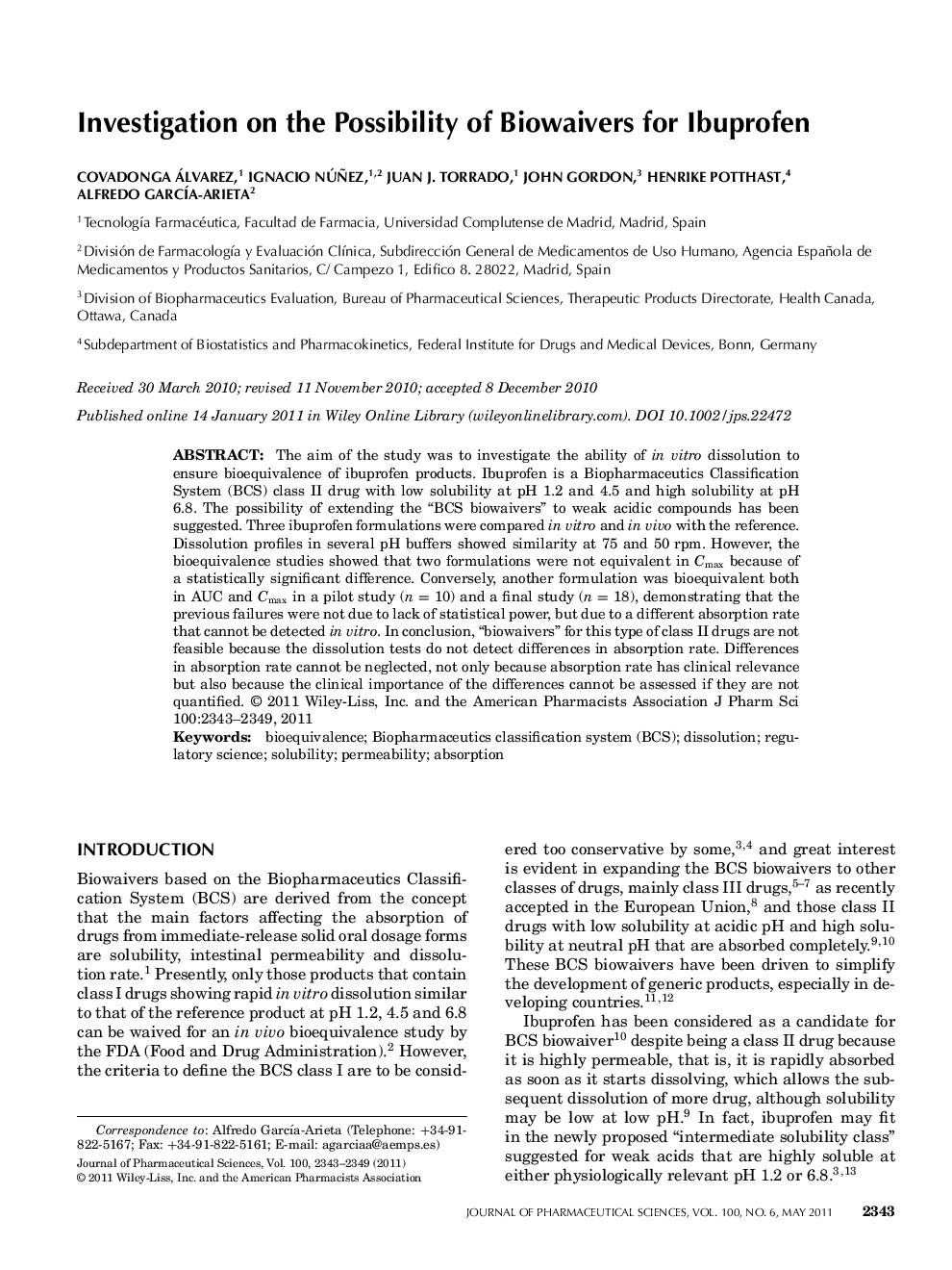| Article ID | Journal | Published Year | Pages | File Type |
|---|---|---|---|---|
| 2486441 | Journal of Pharmaceutical Sciences | 2011 | 7 Pages |
Abstract
The aim of the study was to investigate the ability of in vitro dissolution to ensure bioequivalence of ibuprofen products. Ibuprofen is a Biopharmaceutics Classification System (BCS) class II drug with low solubility at pH 1.2 and 4.5 and high solubility at pH 6.8. The possibility of extending the “BCS biowaivers” to weak acidic compounds has been suggested. Three ibuprofen formulations were compared in vitro and in vivo with the reference. Dissolution profiles in several pH buffers showed similarity at 75 and 50 rpm. However, the bioequivalence studies showed that two formulations were not equivalent in Cmax because of a statistically significant difference. Conversely, another formulation was bioequivalent both in AUC and Cmax in a pilot study (n = 10) and a final study (n = 18), demonstrating that the previous failures were not due to lack of statistical power, but due to a different absorption rate that cannot be detected in vitro. In conclusion, “biowaivers” for this type of class II drugs are not feasible because the dissolution tests do not detect differences in absorption rate. Differences in absorption rate cannot be neglected, not only because absorption rate has clinical relevance but also because the clinical importance of the differences cannot be assessed if they are not quantified.
Keywords
Related Topics
Health Sciences
Pharmacology, Toxicology and Pharmaceutical Science
Drug Discovery
Authors
Covadonga Álvarez, Ignacio Núñez, Juan J. Torrado, John Gordon, Henrike Potthast, Alfredo GarcÃa-Arieta,
